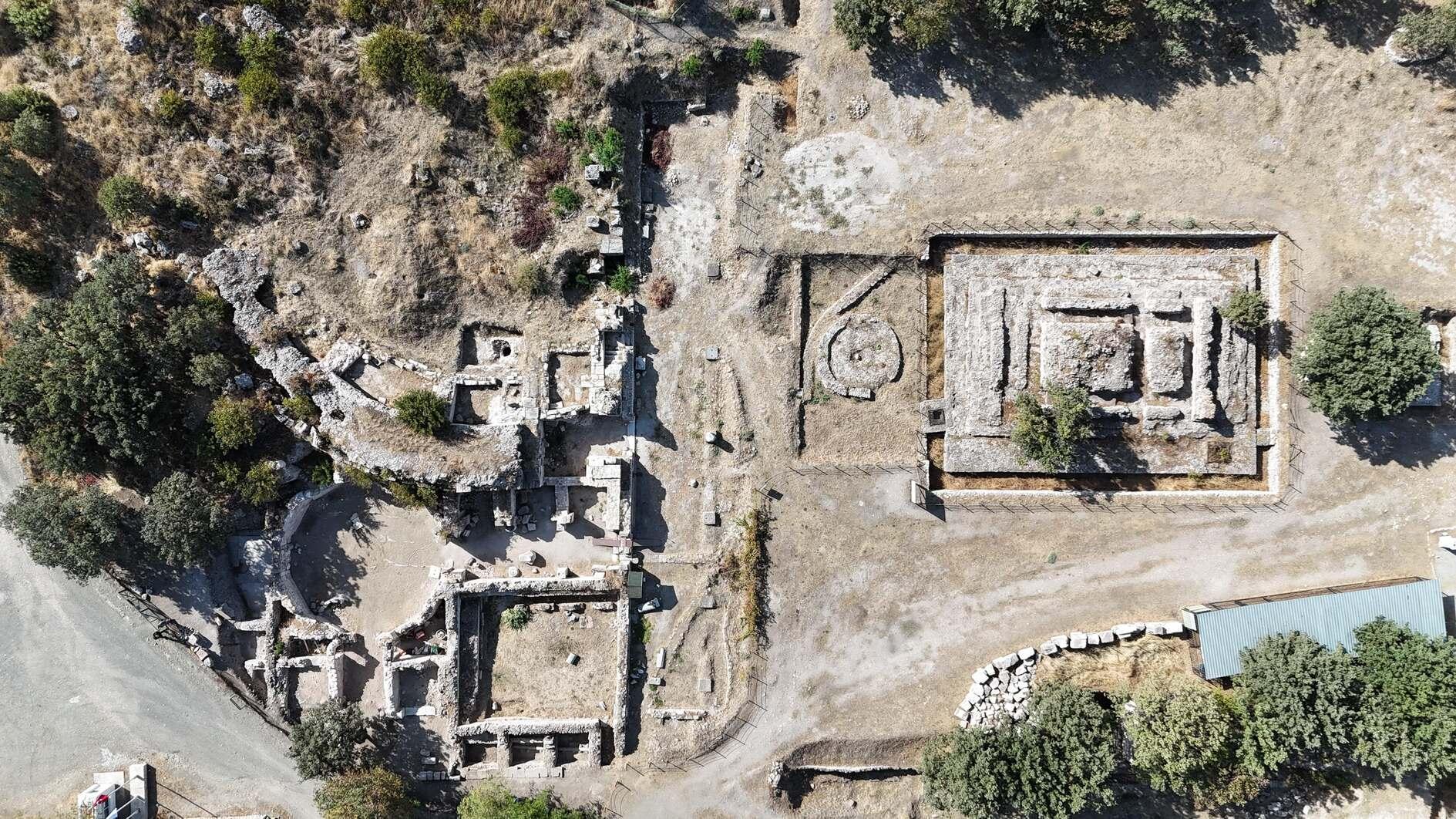Ancient theater awaits to be unearthed
ÇANAKKALE

The approximately 12,000-seat theater of the 2,400-year-old ancient city of Alexandria Troas, located in Dalyan village of Çanakkale's Ezine district, awaits to come to light during excavations in the coming years.
Excavation work at Alexandria Troas, which began on July 1, is set to continue until the end of the year. The excavations, led by Professor Erhan Öztepe from the Department of Archaeology at Ankara University since 2011, are being carried out by teams of about 40 people this year.
In addition to the ongoing excavation work in the city center, the theater — dating back 2,400 years and believed to be the largest in the region — has a capacity of approximately 12,000 people and offers views of the North Aegean Sea and the tourism center of Bozcaada. It is located about 200 meters away amidst olive groves.
Öztepe stated that when they looked at the geography of Anatolia, they encountered areas and structures used for cultural activities in the Roman cities that have survived to this day and that one of these structures exists in Alexandria Troas.
"The city includes an Odeon, a roofed structure used for cultural events, which they began to excavate. An important inscription found reveals that a musician from Lesbos achieved success in a competition held in this Odeon even though the musician’s statue has not survived,” he said.
Another inscription, dating back to the reign of Emperor Hadrian in the 2nd century A.D., provides details on festival schedules and how winners were rewarded. Currently preserved in the Troy Museum, the significance of this inscription is that it opens with the phrase “Addressed to the Dionysian Artists.”
“The use of this phrase is important because it indicates the presence of a resident theater troupe in the ancient city of Alexandria Troas. Just like today, we find many ancient theaters across Anatolia. We know there are theaters in Troy, Parion, and Assos and there is also one in Alexandria Troas,” he said.
Stating that the theater has not been fully excavated yet, Öztepe said, “We have identified from surface traces that it has an approximate facade of 100 meters and a stage building nearing 20 meters. We can see that it is a theater situated on the slope of a hill. It is an early-origin theater because Greek theaters are generally built against a slope, with the seating arranged by carving into that slope.”
Öztepe explained that while the theater underwent renovations during the reign of Emperor Hadrian, it dates back to the city’s founding.
“It is of Greek origin, but based on existing data and wall techniques, it can be said that it underwent renovations and was organized during the reign of Emperor Hadrian. Preliminary estimates suggest that it had a seating capacity of 10,000 to 12,000. Although the theater has not been fully uncovered, future excavations could reveal more about its structure and history,” he added.
















